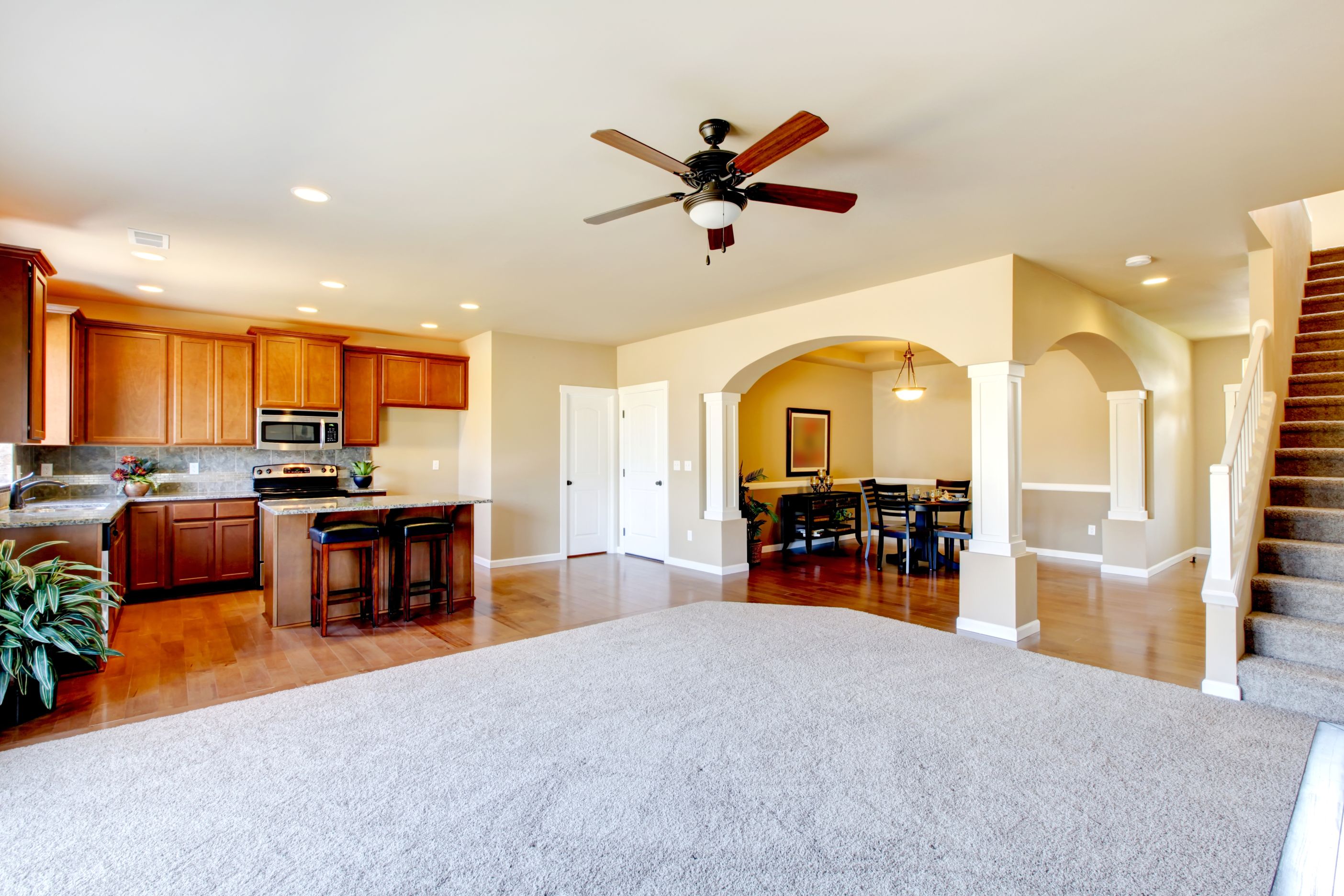Cork Flooring Is Both Resilient And Durable
A natural, resilient, and durable alternative to traditional floors is cork flooring. Harvested from a species of oak that is native to North Africa and Southwestern Europe, cork is now used for more than just a wine stopper. Its natural buoyancy and impermeability make it a soft, strong, and water resistant choice for household and commercial flooring applications.
Price
As an alternative to traditional hardwood flooring material, cork is a little bit more expensive. On average cork costs $4 to $12 per square foot. For the sake of comparison, bamboo flooring, another alternative to hardwood floors, costs from $2 to $10 per square foot. The total cost to install a cork floor in a 250 square foot kitchen can range from $1250 to $3000 total. Denser cork materials are better to use, and are the most expensive. If you choose the less expensive varieties, you will begin to lose the properties of durability and resiliency that make cork floors so unique.
Installation
Cork floors are not difficult to install and make a fairly simple do it yourself project. The installation of cork flooring tiles costs about $5 per square foot including tiles and materials. Prior to installation, the sub floor needs to be prepared with a sub floor primer and the flooring tiles should be taken out of the box and allowed to acclimate to the room where they are going to be installed for 72 hours or more. The process of installation begins with drawing a chalk line from the center of each wall across the floor so that the lines intersect in the middle of the floor at a 90 degree angle. The tiles are then laid out on the floor from the inside to the walls, trimming as necessary.
Durability
As a flooring material, cork is acclaimed for its durability, resiliency, and comfort. Corks natural properties allow it to bounce back from small damage where other materials would scratch and crack. Cork is also a naturally water resistant material. This makes it an intelligent option for bathroom and kitchen renovations. This water resistant feature also makes cork resistant to mildew and mold. Cork is known as well to repel certain damaging insects like carpenter ants and termites.
Fading
One negative about cork is that, as a natural material, it will fade in direct sunlight. This can be avoided, however, by sealing the tiles and then re-treating the floor once every five years or as often as necessary to keep it looking like new. A coat of wax will also help protect the integrity of the cork, and that should be reapplied every year. Although the tiles are made to withstand abuse, it is still a good idea to pad the bottom of furniture to further protect the floor.
Colors
Cork tiles come in a wide variety of colors which can me mixed and arranged to create interesting patterns. If you cant find just the right color to match your home, then you can color the tiles yourself with a water based stain. Experts recommend applying at least three coats of stain and allow two hours drying time between each coat.
Eco-Friendly
Cork is an eco-friendly choice as a flooring material. It is renewable material, growing to full maturity in as little as nine years. Its natural resistance to insects also lessens the need for environmentally damaging pesticides. Cork also has a very unique look and feel, and its sound insulating properties make it ideal for rooms with a lot of guest traffic. It is also relatively low maintenance, requiring a waxing once a year and a reapplication of varnish only once every five years.
Cork flooring is growing popularity and is becoming a highly regarded flooring option the environmentally sensitive consumer.
Category: Const - Carpet & Flooring
Related Articles
- Vinyl Flooring vs Carpet Which is Best
- Bamboo Flooring Adds Natural Beauty To Your Home
- Replacing the Floor in Your Kitchen What to do
- Most Common Flooring Mistakes Types and Installation
- Epoxy Flooring Costs And Installation Facts
- Laminate Flooring Versus Hardwood Flooring - Which One Is Better
- Best Ways to Clean Hardwood Floors
- Flooring Ideas for a Bathroom Find the Best
- Hardwood Floor Repair A Do-It-Yourself Project that Can Be Done on a Weekend
- Solid Wood Flooring Installation Tips
- Tips About Floor Cleaning For Homes And Businesses
- How to Pick the Best Bathroom Flooring
Business News
Popular Posts
- Universal Pursuit of Happiness - Wisdom from World Religions
- Overcoming Ego and Self-Centeredness - Lessons from World Religions
- Transcending Materialism - Spiritual Practices from World Religions
- Overcoming Prejudice and Intolerance - Guidance from Global Faiths
- How Mind Balance Can Improve the Mindsets of Employees
- Interfaith Insights by 1WorldPeace - The Top 100 Universal Beliefs in Global Spirituality
- Bridging Beliefs - Finding Common Ground in Love and Respect
- The SmartGuy Vision - A United Future Through Interfaith Love and Respect
- A Cautionary Vision - The Grim Future of a Divided World Without Love and Balance
- A Tapestry of Faiths - Exploring the Common Threads in World Religions
- Fostering Harmony Among Christianity Islam Buddhism Hinduism and Judaism
- Preparing Kids for Adulthood - 15 Vital Skills They Wont Learn in School
- Navigating Diversity - Jerusalem's Tactical Approach to Interfaith Harmony
- Clearing Mental Plaque: The Path to Enhanced Communication and Divine Connection
- Why Return to Jesus Christ and the Church
- Top 50 Ways to Live Longer
- Adventurous Romance -The Key to Enhancing Relationship Chemistry
- Pork Tenderloin with Mustard Cream Sauce
- Navigating Technology and Media for Optimal Mental Well-Being
- Understanding the Link Between Mental Health and Substance Abuse
